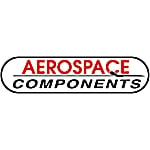- Oil System
- Crankcase Evacuation System
- Aerospace Components Vacuum Pumps and Vacuum Pump Kits
Increase Engine Vacuum
Aerospace Components Vacuum Pumps create high crankcase vacuum. This increases horsepower by improving ring seal and preventing blow-by, intake charge contamination and detonation. Aerospace Vacuum Pumps allow racers to run low tension piston rings for less friction and is more consistent and effective then a header mounted evacuation system. Made in the U.S.A.
Vacuum Pumps
Aerospace Components AC-VP3-CM Vacuum Pump Billet Aluminum Construction
Vacuum Pump Standard Kits
Aerospace Components Vacuum Pump Standard Kit Small Block Ford With 3 Bolt Balancer
Aerospace Components Vacuum Pump Standard Kit Small Block Ford With 4 Bolt Balancer
Aerospace Components Vacuum Pump Standard Kit Big Block Ford With 3 Bolt Balancer
Aerospace Components Vacuum Pump Standard Kit Big Block Ford With 4 Bolt Balancer
Vacuum Pump Complete Kits
Aerospace Components AC-VP3CK-SBC Vacuum Pump Complete Kit Small Block Chevy
Aerospace Components AC-VP3CK-BBC Vacuum Pump Complete Kit Big Block Chevy
Vacuum Pump Rebuild Kit
Aerospace Components AC-VPRK3-2 Vacuum Pump Rebuild Kit (2) Double Sealed Ball Bearings
Oil Breather Tank
Direct Port Vacuum Relief Valve
Vacuum Relief Valve
What Are The Top Aerospace Components Vacuum Pumps and Vacuum Pump Kits?
The most common Aerospace Components vacuum pump kit is the Big Block Chevy Complete Kit. In second place is the Complete Small Block Chevy Vacuum Pump Kit. The most popular Aerospace vacuum pump is the Billet 3-Vane Vacuum Pump. Another very popular product from Aerospace Components is the Aerospace vacuum pump rebuild kit, which is usually required after 1-2 seasons of race use.
How Much Do Aerospace Components Vacuum Pumps and Vacuum Pump Kits Cost?
Aerospace vacuum pumps start at just over $450 and increase to around $1100 for a complete kit, depending on the options, vacuum pump type, and application.
What Are The Main Benefits of Aerospace Components Vacuum Pumps and Vacuum Pump Kits?
The main purpose of an Aerospace vacuum pump is to create high vacuum in a race engine crankcase. Horsepower is increased by improving ring seal and reducing the chances of detonation, blow-by, and contamination to the intake charge of air and fuel. Aerospace vacuum pumps are also rebuildable, making them more cost-efficient than competitors.
How To Install An Aerospace Components Vacuum Pump or Vacuum Pump Kit
Depending on the vacuum pump and kit, the installation instructions will change. In general, the first step is locating a position on the front of the engine for mounting and then bolting the pump bracket in place, followed by the vacuum pump. Next, the front face of the valve cover is drilled and a fitting installed that will lead to the inlet side of the vacuum pump. This creates maximum vacuum and ideally will provide adequate lubrication to the pump without the need for manually adding oil to the inlet. The outlet side of the pump is then plumbed into a breather tank, which will require periodic draining. Next, the drive hub / mandrel needs to be bolted to the front of the harmonic balancer damper and the belt installed. With everything confirmed installed, the engine can be started and the relief valve adjusted so that 10-12 in/hg of vacuum is reading on a wet sump engine using a vacuum gauge in the valve cover. For dry sump engines, the engine builder will determine the correct amount of vacuum.
